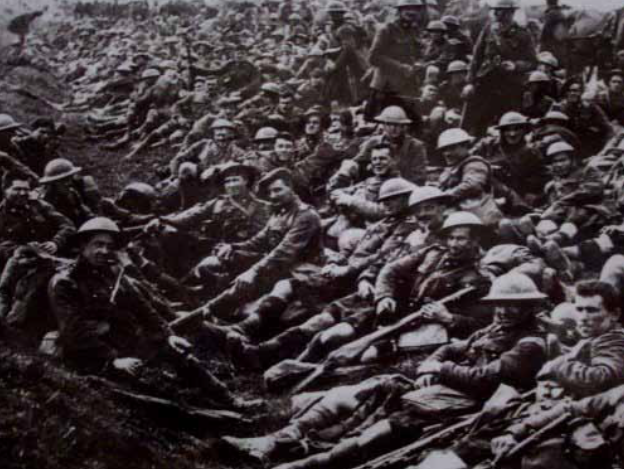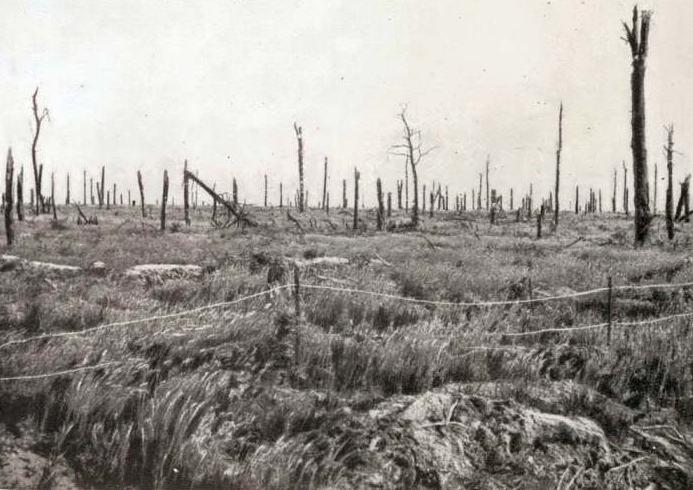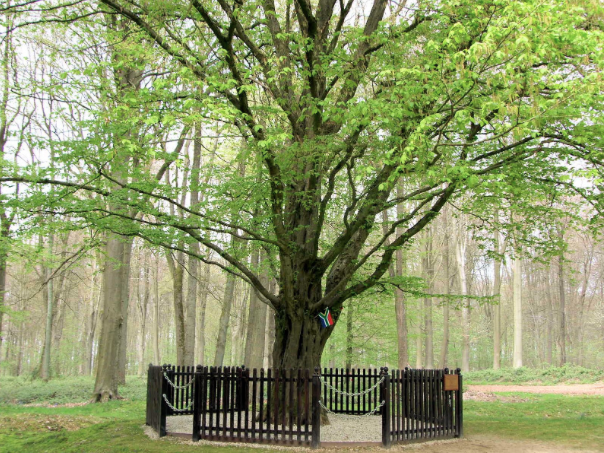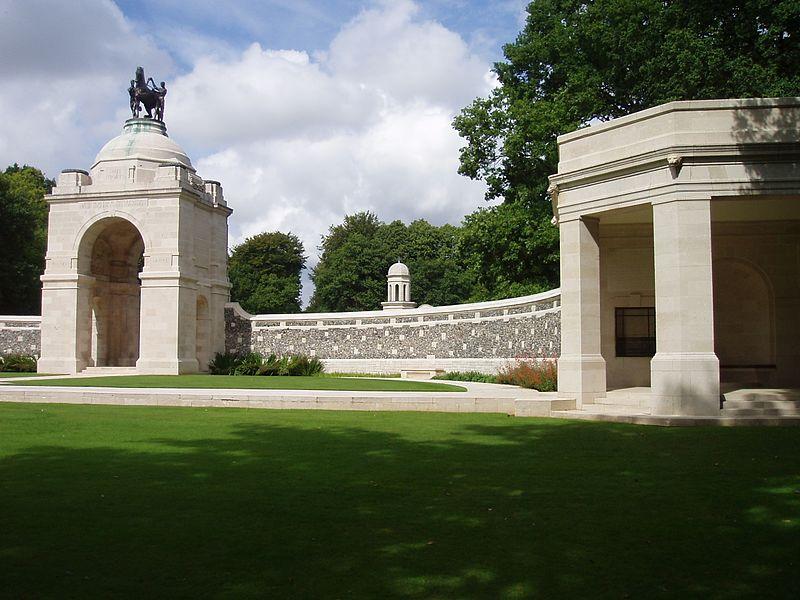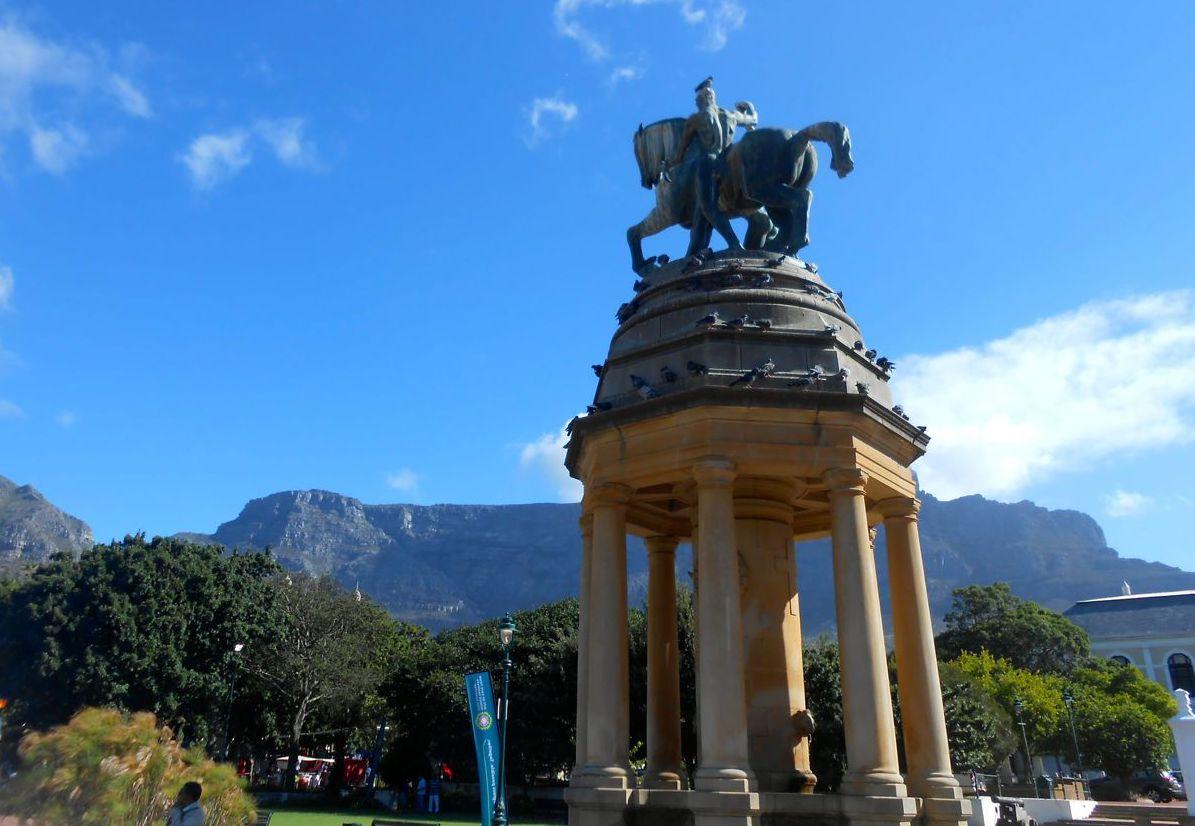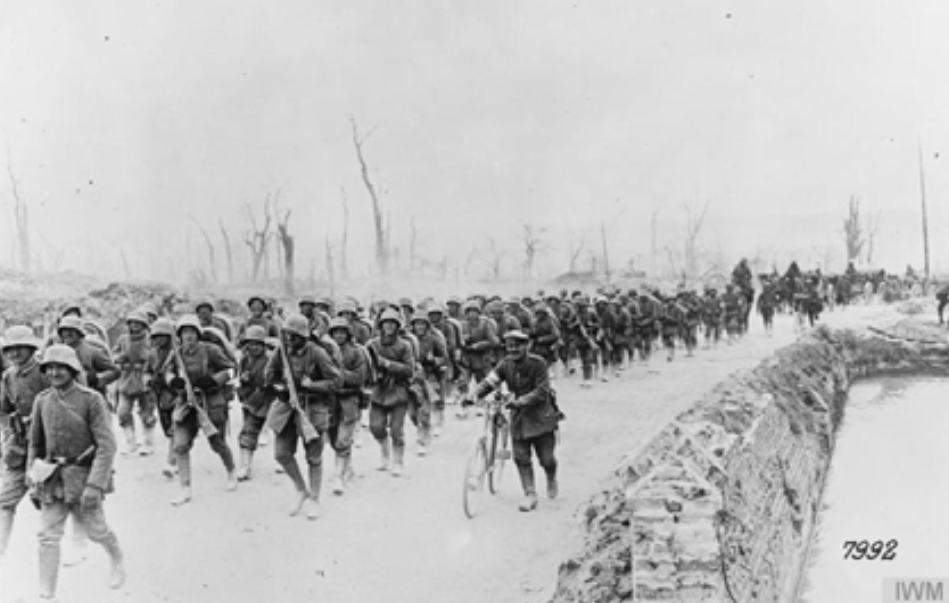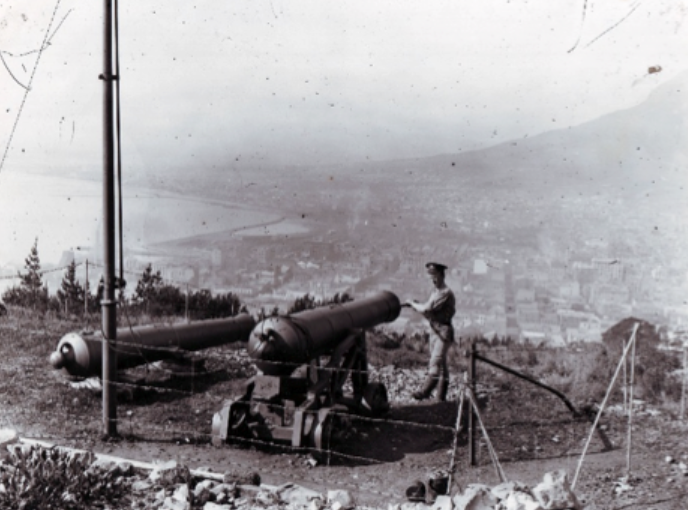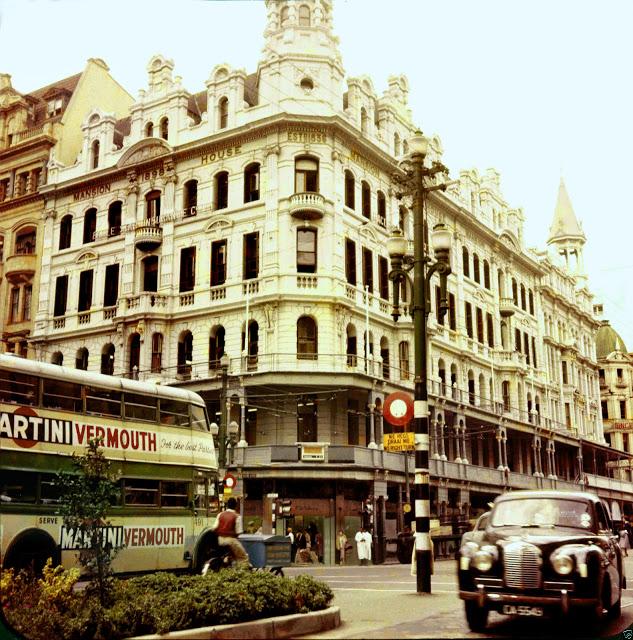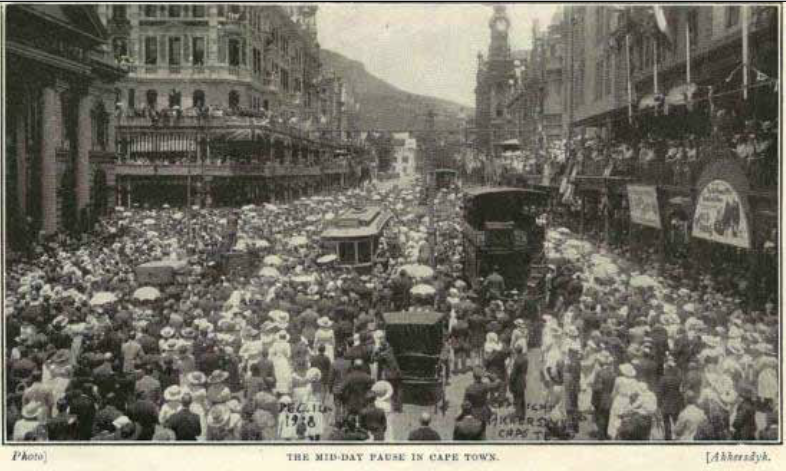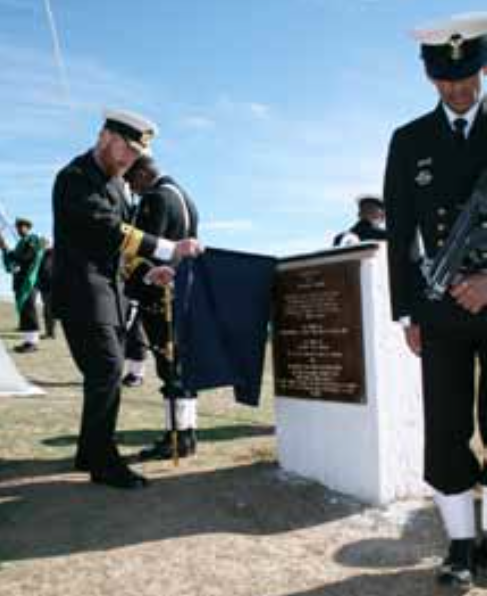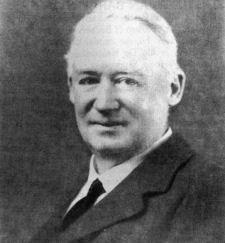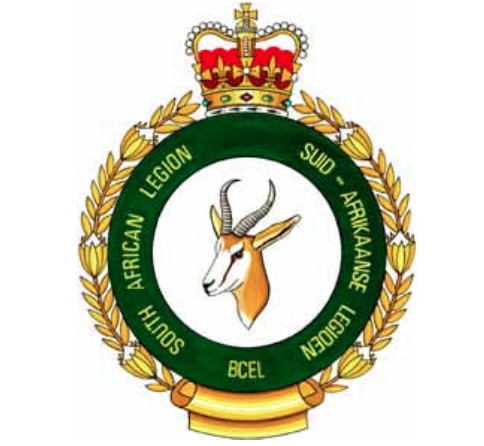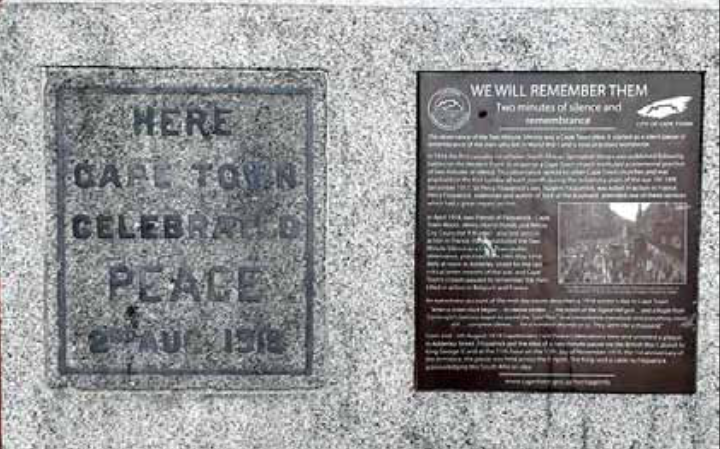
Disclaimer: Any views expressed by individuals and organisations are their own and do not in any way represent the views of The Heritage Portal. If you find any mistakes or historical inaccuracies, please contact the editor.
At 05:30 on the morning of 11 November 1918, in a railway coach standing at a remote railway siding in the heart of the forest of Compiègne, Germany signed the Armistice Agreement that brought the war to an end.
Soon after, telegraph wires were humming with the message: “Hostilities will cease at 11.00 today November 11. Troops will stand fast on the line reached at that hour...”.
Thus, at 11:00 on 11 November 1918 the guns on the Western Front in France and Flanders fell silent after more than four years of continuous warfare, warfare that had witnessed the most horrific casualties – such as when on a single day in the Battle of the Somme, there were more than 60,000 casualties.
So ended the First World War, at that time although officially known as the Great War it was usually known in the common vernacular as ‘the war to end all wars’! Regretfully the common vernacular got it terribly wrong as apart from a number of local wars being fought continuously in various places in the world, two months short of 21 years later world war was again started and what we know as the Second World War commenced on the 3rd of September 1939.
Most people today are aware of the Act of Remembrance, which when possible is held annually at the eleventh hour of the eleventh day of the eleventh month.
A ceremony that is carried out in many places in many countries, when people come together to pay tribute and do honour to all the men and women who have lost their lives in any one of the many conflicts that have occurred at anytime, anywhere in the world.
However, very few seem to be aware of the fact that the concept of the two minute silence usually observed at these gatherings as well as the concept of the annual act of remembrance both originate in the City of Cape Town. Let us look at how it all began.
Veterans commemorate Remembrance Day in Johannesburg (The Heritage Portal)
The Battle for Delville Wood
This was the first major battle on the Western Front in France that brought home to South Africans the incredible slaughter of men happening in France.
In the four days between 15 and 19 July 1916 during the Battle of Delville Wood, the South African Brigade, numbering only 3,150 men and attached to the 9th Scottish Division, suffered some 2,500 casualties in which the dead outnumbered the wounded four to one – as an indication of what they faced at the height of the battle, German artillery fire reached a rate of 400 shells per minute all aimed at a relatively confined area!
Men of the 4th South African Infantry Regiment take a rest along a road (Delville Wood Museum)
Delville Wood just after the War – Photo Michelin Guide to the Somme Battlefields
This was South Africa’s greatest loss ever in a single battle and the Delville Wood Memorial in France is now the South African First World War Memorial.
The prime mover of the project to purchase from France the land on which this Memorial is built was Sir Percy Fitzpatrick (Author of Jock of the Bushveld) and he was also Chairman of the committee in South Africa which raised funds to build it.
One of his first tasks was to replant the actual forest, which had been totally destroyed and symbolically this was accomplished with acorns collected from a tree at Franschoek which had grown from one of six acorns brought from France by a French Huguenot when he fled from France in 1688.
This single hornbeam tree is the only tree that survived the shelling more or less intact and it has continued to grow since the war. Visitors will see that the trunk is studded with shards of metal artillery shell casing. (via Pinterest)
Delville Wood South African National Memorial (via Wikipedia)
Delville Wood Memorial Cape Town (The Heritage Portal)
The First Battles of the Somme
On 11 November 1917 – it is fascinating how often the 11th of November seems to play a part in this story - the German High Command decided to make a decisive attack on the Western Front in the spring of 1918. Their target was the destruction of the British Army.
This decision resulted in the First Battles of the Somme when after transferring very large forces from the now collapsed Eastern Front (due to the withdrawal of Russia from the war) Germany began a series of large scale offensives beginning on the 21st of March 1918, the first being Operation MICHAEL, striking at the British Fifth and Third Armies. The Germans made a deep advance and inflicted huge losses on the British forces.
German reserves, released from their Eastern Front for Operation Michael, marching forward along the Albert road. Imperial War Museum image Q51466
When the first casualty lists recording the horriffic loss of life in these Battles were announced in Cape Town, Mr J A Eagar, a Cape Town businessman, suggested to the congregation of the church he attended, that they should observe a special silent pause to remember the South Africans on that casualty list. As it happened this was also the church attended by Sir Percy Fitzpatrick, the significance of his attendance on this occasion will be explained later.
One of the City Councillors, a Mr R R Brydon, whose son, Major Walter Brydon had been serving on that front, been wounded three times and been gassed, before he was killed in action on 12 April 1918, taking note of the reports from the front in France, wrote a letter to the Editor of the Cape Times suggesting that a period of silence be initiated to remember the terrible events unfolding on the Battle FIelds of France and the sacrifices being made there.
In May 1918, the Mayor of Cape Town, Councillor Sir Harry Hands – whose son, Captain Richard Hands, serving as a member of ‘Brydon’s Battery’ had been mortally wounded in the same battle in which Maj Brydon had been killed - reacted positively to this suggestion and initiated a plan to have a period of silence (initially set at 3 minutes) that would follow the ring of the noon gun on Signal Hill, the most audible signal across the city.
Old photo of the Noon Gun
At Noon on Tuesday 14 May 1918
For the first time, the boom of the noon gun was the signal for Cape Town as a city to obey the request of their Mayor and stop whatever it was that they were doing, bow their heads and mourn those who had given their lives in the fighting on the Western Front in France.
The citizens of Cape Town also reacted extremely positively to this request and Cape Town came to a halt as everyone and everything came to a dead stop while the citizens bowed their heads in a silent prayer for those in the trenches in Flanders.
As soon as the city fell silent, melancholy strains reverberated through the city as a trumpeter, standing on the balcony of the Fletcher and Cartwright's Building at the corner of Adderley and Darling Streets, sounded the Last Post. There was then silence for three minutes after which the trumpeter sounded Reveille, and the City returned to its normal noisy flow of vehicles and people.
Fletcher and Cartwright building in 1961 (via Vintage.es)
The Midday pause in Adderley Street 1918. This is the same photo that is used on the plinth in Adderley Street.
The result of the Mayor’s appeal had exceeded all his expectations. The following morning articles about the event appeared in all the newspapers describing how trams, taxis and private vehicles all came to a stop whilst pedestrians came to a halt and most men bared their heads. People who were at work stopped what they were doing at their places of work and sat or stood silently.
One journalist described a young woman dressed in black, who came to a halt on the pavement and furtively dabbed at her eyes with a handkerchief and commented: “One could not but wonder what personal interest she had in the act of remembrance”.
A few days later the Mayor decided to shorten the duration of the pause from three to two minutes, “in order to better retain its hold on the people” and this is the timing that has continued to be used down the decades that have followed.
The midday pause continued to be observed daily in Cape Town until the 17th of January 1919 when it was observed for the last time, however it was revived in Cape Town during the Second World War.
Memorial plinth Adderley Street
On the 14th of May 2007 the Executive Mayor of Cape Town unveiled a plinth that stands on the pavement in Adderley Street for the 89th anniversary of the first occasion on which this event took place. Included in the plaque is the convention of the two minutes silence:
One minute in Remembrance of those who died for their cause
One minute in Gratitude for Survivors.
On the 2nd of August 1919, a function to celebrate the Peace was held in Cape Town and a plaque in memory of this was placed in the pavement close to the Fletcher & Cartwright building. This plaque is now included on one side of the plinth (see main image).
Memorial Plaque Signal Hill
On the ninetieth anniversary of that first firing, 14 May 2008, Flag Officer Fleet, Rear Admiral R W Higgs unveiled a commemorative plaque that had been erected on Signal Hill recording the fact that the traditional ‘two minutes silence in remembrance’ was first observed in Cape Town.
Flag Officer Fleet, R Adm R W Higgs, unveils a plaque at Signal Hill on the ninetieth anniversary of the first two minutes silence in Cape Town
The annual pause throughout the British Commonwealth
This was also driven from Cape Town. Sir Percy Fitzpatrick had been impressed by the period of silence, especially as he had a personal interest in the daily remembrance in that his son, Maj Nugent Fitzpatrick, the battery commander of 71st Siege Battery, had been killed on 14 December 1917 by a chance shell fired at long range. Sir Percy was understandably deeply affected by the loss of his favourite son and was also so moved by the dignity and effectiveness of the two minute pause in Cape Town that the date and time of the Armistice inspired him to suggest an annual commemoration on an Empire wide basis, that is amongst all the nations that today are represented in the British Commonwealth of Nations.
He suggested this idea to Lord Northcliffe (a British newspaper and publishing magnate of that era) and was disappointed by his lack of support. Nevertheless this did not deter him, so he therefore approached the Colonial Secretary, Lord Milner, who forwarded on to Lord Stamfordham, the King’s private secretary, the suggestion that the two minute pause of remembrance should be observed annually in order to honour those who had fallen in the Great War. King George V was obviously moved by the idea and as a result on 7 November 1919 The Times of London carried this message from the King:
“Tuesday next November 11, is the first anniversary of the Armistice, which stayed the world carnage of the four preceding years... it is my desire and hope that at the hour when the Armistice came into force, the eleventh hour of the eleventh day of the eleventh month, there may be, for the brief space of two minutes, a complete suspension of all our normal activities. During that time, except in the rare cases where this may be impracticable, all work, all sound and all locomotion should cease, so that, in perfect silence, the thoughts of everyone may be concentrated on reverent remembrance of the Glorious Dead”.
Sir Percy was in America on business when he read on 12 November 1919 that the first Two Minute Pause had been observed in England the previous day. He was so moved by the experience that he could not leave his room at the hotel for an hour or two.
The Times newspaper reported, “Throughout the British Empire, from the jungles of India to the snows of Alaska, on trains, on ships at sea, in every part of the globe where a few British were gathered together, the Two Minute Pause was observed”.
On 30 January 1920, Sir Percy Fitzpatrick received a letter signed by Lord Stamfordham, the King’s Private Secretary.
Dear Sir Percy, The King, who learns that you are shortly to leave for South Africa, desires me to assure you that he ever gratefully remembers that the idea of the Two Minute Pause on Armistice Day was due to your initiation, a suggestion readily adopted and carried out with heartfelt sympathy throughout the Empire”. Signed Stamfordham.”
The solemn pause of silence has been adopted around the world, regardless of race, religion or culture. It is the greatest mark of respect that anyone can collectively pay to those who lost their lives in defence of their country.
Sir Percy Fitzpatrick (via Wikipedia)
The South African Legion
I cannot finish without spending a few minutes on the BESL or as we know them in South Africa, the South African Legion.
As it has been largely the subsidiary Legions of the British Empire Service League (BESL) who have kept the concept of the November day of remembrance alive and well, it is appropriate to look at their history, especially as once again they also had their origins here in Cape Town.
The driving force behind the establishment of the BESL was the fact that thousands of the men who had fought on the British side in the First World War and suffering the horrors of war in France and Flanders, underwent incredible hardship once they had been discharged from the armed services and returned to civilian life.
Realising the serious plight in which men found themselves, three prominent soldiers: Field Marshall Earl Haig, General the Rt. Hon. Jan Smuts and General Sir Henry Lukin at an inaugural meeting which was held in the City Hall, Cape Town on 21 February 1921, founded the British Empire Service League (BESL).
The South African Branch was titled ‘British Empire Service League (South Africa) but in April 1941 in deference to the pro-war and anti-war factions in the country the name was changed to the ‘South African Legion of the BESL. In 1952 it was again altered, this time to the South African Legion of the British Commonwealth Ex-Service League. The headquarters of the SA Legion were originally in Bloemfontein but moved to Johannesburg in 1942.
The aim of the BESL was to provide care, employment and housing. Building on the foundation the Legion continued this good work after the Second World War. Thousands of men and women have been assisted in all manner of means and this work carries on today as former National Servicemen as well as those who were part of the Armed Struggle are assisted with advice and direction.
Towards the end of the Second World War the Legion launched several housing schemes in various parts of the country, including housing projects for coloured and black soldiers. A large social centre and chapel in Soweto is a good example. When the Government lifted the ban on Black people owning property, veterans living in over 200 homes built by the Legion in the Dube and Moroka districts of Soweto found themselves entitled to acquire their homes on a 99 year leasehold.
From the beginning the Legion established a close liaison with Government Departments, which fortunately still exists, although there have been times when relations were strained. A major clash took place when the Legion reacted strongly in 1956 to the Government’s move to ban black and coloured veterans from Remembrance Day Services.
Successive governments have enlisted the help of the Legion when drawing up war pension legislation and Legion representations have made a significant contribution towards making this legislation among the most generous enacted in the world. The fight to obtain parity of pensions for all – white, coloured and black veterans was finally won in 1986/87. It had been a long battle.
One of the Legion’s major undertakings is securing pensions for South African post-war disabled servicemen and it also undertakes investigations in respect of assistance requested by other Commonwealth ex-service personnel who now reside in this country.
Notes for a talk given by Chris Bennett on 9 May 2018 at the Naval Heritage Trust AGM. Click here to view the original document. Chris is the Deputy Chairman of the Trust and his title is Rear Admiral C H Bennett SAN (Retired).
Comments will load below. If for any reason none appear click here for some troubleshooting tips. If you would like to post a comment and need instructions click here.


